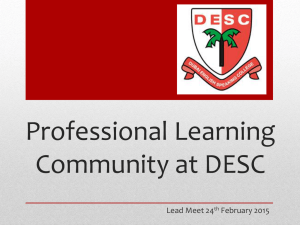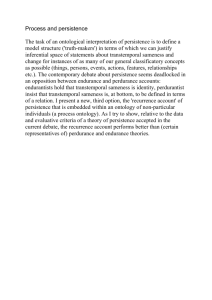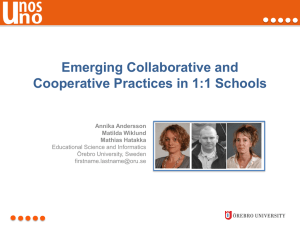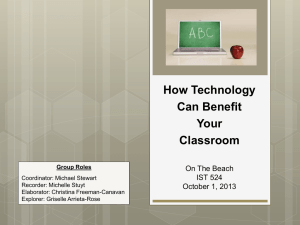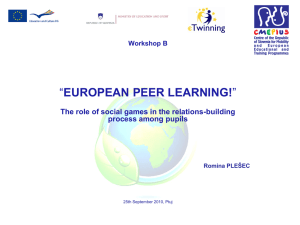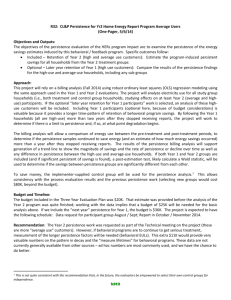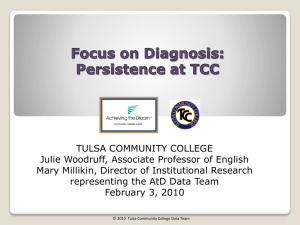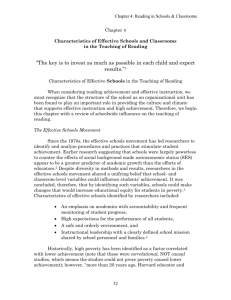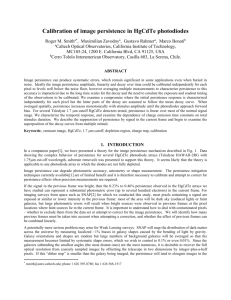Classrooms as Communities: Exploring the
advertisement
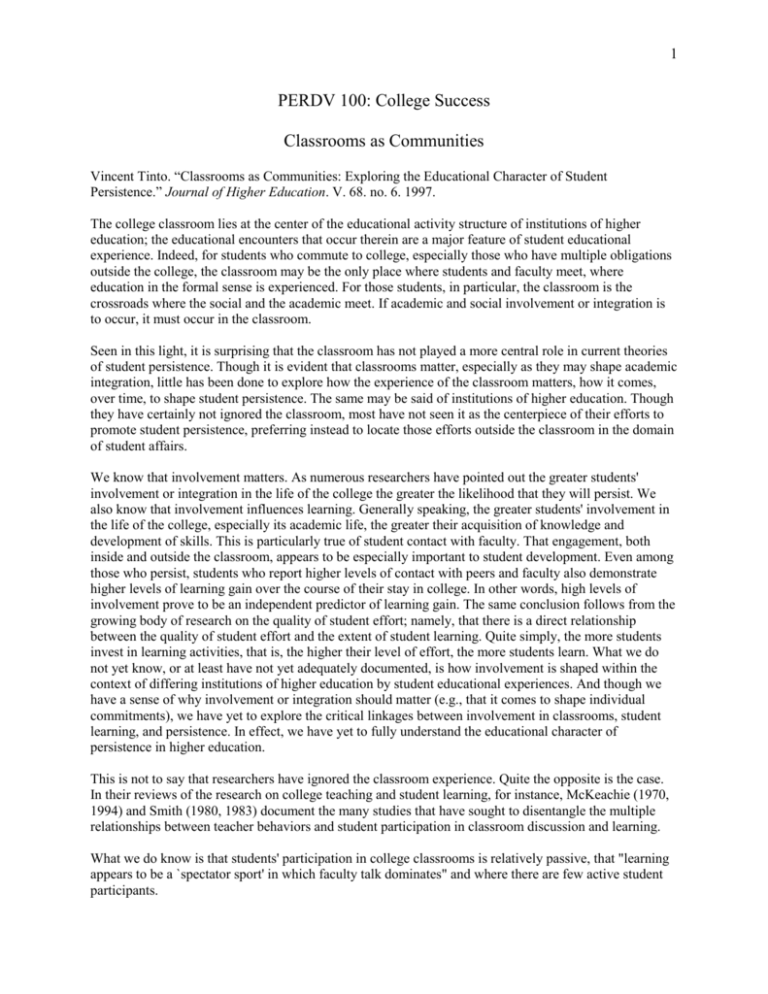
1 PERDV 100: College Success Classrooms as Communities Vincent Tinto. “Classrooms as Communities: Exploring the Educational Character of Student Persistence.” Journal of Higher Education. V. 68. no. 6. 1997. The college classroom lies at the center of the educational activity structure of institutions of higher education; the educational encounters that occur therein are a major feature of student educational experience. Indeed, for students who commute to college, especially those who have multiple obligations outside the college, the classroom may be the only place where students and faculty meet, where education in the formal sense is experienced. For those students, in particular, the classroom is the crossroads where the social and the academic meet. If academic and social involvement or integration is to occur, it must occur in the classroom. Seen in this light, it is surprising that the classroom has not played a more central role in current theories of student persistence. Though it is evident that classrooms matter, especially as they may shape academic integration, little has been done to explore how the experience of the classroom matters, how it comes, over time, to shape student persistence. The same may be said of institutions of higher education. Though they have certainly not ignored the classroom, most have not seen it as the centerpiece of their efforts to promote student persistence, preferring instead to locate those efforts outside the classroom in the domain of student affairs. We know that involvement matters. As numerous researchers have pointed out the greater students' involvement or integration in the life of the college the greater the likelihood that they will persist. We also know that involvement influences learning. Generally speaking, the greater students' involvement in the life of the college, especially its academic life, the greater their acquisition of knowledge and development of skills. This is particularly true of student contact with faculty. That engagement, both inside and outside the classroom, appears to be especially important to student development. Even among those who persist, students who report higher levels of contact with peers and faculty also demonstrate higher levels of learning gain over the course of their stay in college. In other words, high levels of involvement prove to be an independent predictor of learning gain. The same conclusion follows from the growing body of research on the quality of student effort; namely, that there is a direct relationship between the quality of student effort and the extent of student learning. Quite simply, the more students invest in learning activities, that is, the higher their level of effort, the more students learn. What we do not yet know, or at least have not yet adequately documented, is how involvement is shaped within the context of differing institutions of higher education by student educational experiences. And though we have a sense of why involvement or integration should matter (e.g., that it comes to shape individual commitments), we have yet to explore the critical linkages between involvement in classrooms, student learning, and persistence. In effect, we have yet to fully understand the educational character of persistence in higher education. This is not to say that researchers have ignored the classroom experience. Quite the opposite is the case. In their reviews of the research on college teaching and student learning, for instance, McKeachie (1970, 1994) and Smith (1980, 1983) document the many studies that have sought to disentangle the multiple relationships between teacher behaviors and student participation in classroom discussion and learning. What we do know is that students' participation in college classrooms is relatively passive, that "learning appears to be a `spectator sport' in which faculty talk dominates" and where there are few active student participants. 2 Interestingly, both Fassinger (1995) and Nunn (1996) find that classroom traits, specifically a supportive atmosphere, is as important to student participation as are student and faculty traits.The recognition of the importance of classroom environment is part of another area of inquiry, namely the role of classroom context, its educational activities and normative orientations, in student learning. Rather than focus on the behaviors of faculty, a number of researchers have focused on the role of pedagogy and, in turn, curriculum and classroom activities as predictors of student learning. Generally speaking, these have led to a growing recognition that student learning is enhanced when students are actively involved in learning and when they are placed in situations in which they have to share learning in some positive, connected manner . Though it is apparent that the college classroom is, for many if not most students, the only place where involvement may arise, it remains the case that most college classrooms are less than involving. At the same time, students continue to take courses as detached, individual units, one course separated from another in both content and peer group, one set of understandings unrelated in any intentional fashion, to what is learned in another setting. There are however a growing number of exceptions. A range of institutions, both two- and four-year, have sought to redefine students' learning experience by restructuring the classroom, altering faculty practice, and linking courses one to another so that students encounter learning as a shared rather than isolated experience. One of these institutions, Seattle Central Community College, and its Coordinated Studies Program. . . . . **** The results of our studies lend support to some of the basic tenets of learning communities and the collaborative pedagogy that underlies them. First, it is evident that participation in a collaborative or shared learning group enables students to develop a network of support--a small supportive community of peers--that helps bond students to the broader social communities of the college while also engaging them more fully in the academic life of the institution. This community of classroom-based peers, formed in the CSP, served to support students and encourage their continued attendance and class participation. It did so both inside and outside the classroom. Groups that formed within the classroom often extended beyond the classroom in informal meetings and study groups--or as one student put it, "we are more involved with class after class." In this manner, collaborative learning settings enabled new students to bridge the academic-social divide that typically confronts students in these settings. They were able to meet two needs, social and academic, without having to sacrifice one in order to meet the other. In effect, these classrooms served as the academic and social crossroads out of which "seamless" educational activities are constructed. Second, it is apparent that students are influenced by participating in a setting in which sources of learning come from a variety of perspectives beyond that of one faculty member. The sharing of a curriculum and the use of collaborative pedagogy that brought students and faculty together to teach added an intellectual richness to student experience that the traditional pedagogy did not. Course activities allowed students to connect their personal experiences to class content and recognize the diversity of views and experiences that marked differing members of the classroom. In opening up the conversation about what is known to many voices, student and faculty, the program led many students to discover, or better yet uncover, abilities they had not appreciated until then. Third, though we did not obtain information about "learning" as measured by tests either of content or skills (e.g., critical thinking, etc.), we know that student perceptions of intellectual gain as well as academic performance as measured by GPA were greater in the learning community setting than in the 3 more traditional learning settings and that these "gains" were independent of student attributes. Just as important, we know from student comments that the quality of learning was seen to be different, indeed deeper and richer, in the collaborative learning settings. Again as one student told us; "we not only learn more, we learn better."
